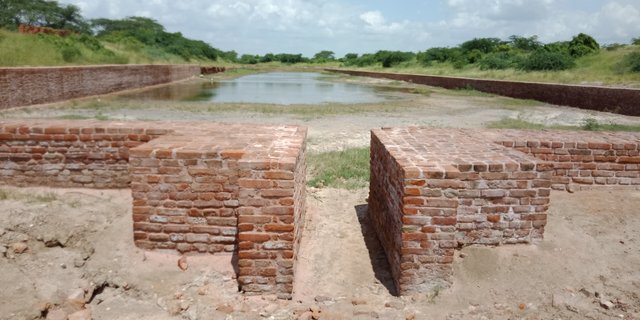
A governing power ruled by priests and priest-classes preceded autocratic despots. Status symbols, ornaments such as beads and shells found throughout the Indus realm was also due to social stratification.
In his book, World Economic History Professor Larry Neal sets the stage for the economic backdrop of antiquity; he uses Sumer as an example. He says:
‘’The black alluvial soil natural fertility is renewed annually by sludge deposited on the Euphrates and Tigris spring waters. Full utilization of its production capacity, however, required a developed drainage and irrigation system, which in turn lined up a large and well-disciplined workforce like skilled management and supervision. The latter was provided by a class of priests and warriors who ruled over a large submissive population of peasants and craftsmen. By tributes, taxes, and slavery, rulers watered down the wealth used for the building of temples and other public buildings...Early cities such as Eridu, Ur, Uruk, and Lagash were temple cities, which meant both the economic and religious organization was built around the temple of the local god of security, ruled by a priestly hierarchy. Members of the authority led the work on irrigation as well as agriculture as a whole and monitored the collection of products in the form of tribute or tax.’’
( see Larry Nealand Rondo Cameron, The History Of World Economy, Page 30)
Without substantiated evidence of where the priests of the ancient world originate one might assume that they must descend to us from a much older system, based upon Shamans and medicine men leading humanity in a world now lost and forgotten - like a dim recollected memory now recorded in the myths of our society. When religion occupies both the rulership over spiritual and political matters, it is called a Theocracy, the definition of which is ‘’ a government of a state by immediate divine guidance or by officials who are regarded as divinely guided’’.
( see Webster Dictionary, Theocracy)
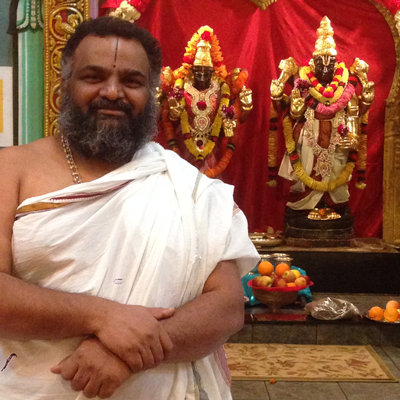
A Brahmin Priest
Science and politics started as the particular domain of knowledge for the priestly elite, which, to ensure the preservation of the moral, political and economic order, had to be able to read the language of the divinities inscribed in the regularities of the starry firmament. Very early on they realized that astronomical cycles in the sky had a direct relationship to terrestrial cycles on earth.
Moreover, by believing that celestial objects influenced earth, and controlled all organic beings, these celestial objects became the great gods on their thrones in heaven.
The Indus culture began to measure the movement of their gods; in other words, the sun, the moon, the closest planets, and the stars. With further extensive knowledge, and with the motive to track their gods the ancients invented lunar, solar, and zodiacal calendars and through which the earliest attempt of what we know today as astronomy and astrology came forth. These came to be known as the astronomer-priest the dividers of space and time.
‘'For the priests it was a heads-I-win-tails-you-Iose system in which no war or other important undertaking was initiated until the good will of the gods had been determined by any form of divination and insured by the offering of gifts and prayers to the temple gods.
If disaster followed, however, it was accepted as evidence that the gods were extremely angry, and that more prayers and greater gifts were necessary. It was, therefore, to the interest of the priests to maintain the belief that all phenomena on earth were under the ruling power of the deities, whose wills and actions they, the priests, could reveal.
Forewarnings of such catastrophes as floods, famines, or military defeats enabled the rulers either to make preparations to avoid them or by prayers, gifts, and sacrifices to wheedle and flatter the gods into changing their plans.’’
(see Sex Symbols and the Stars, Ernest Busenbark, page 270)
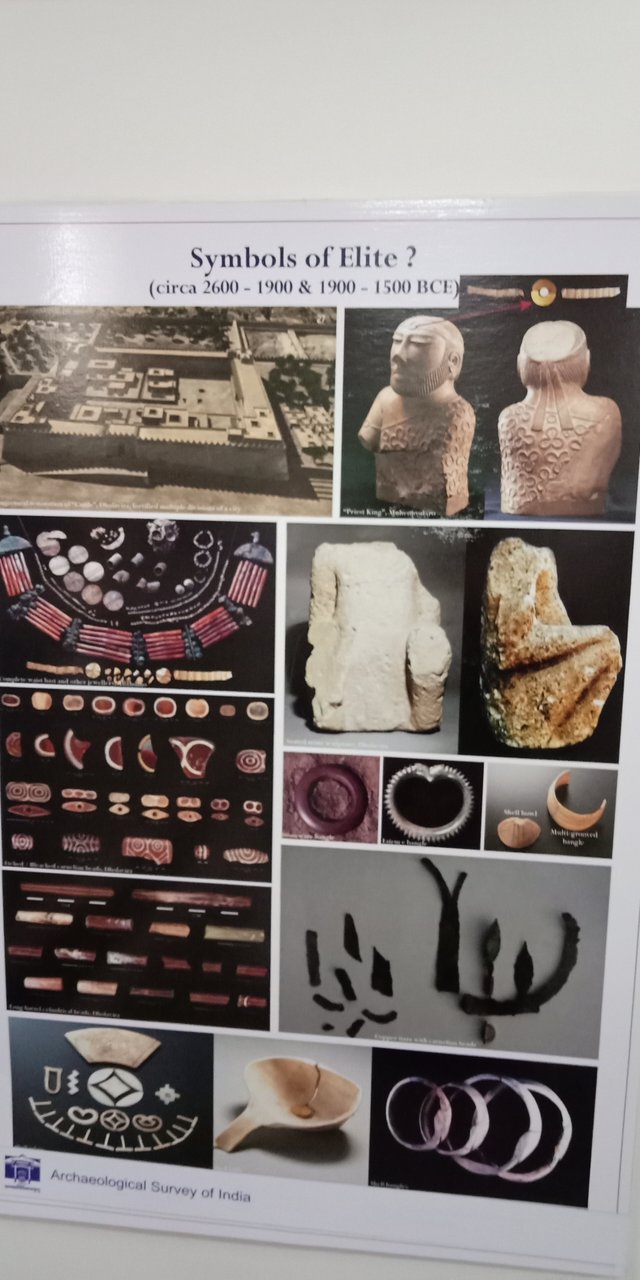
Archeologists now believe that the Harappans used materials such as palm leaves, cloth or bark on which they recorded their written accounts. The bureaucratical organization is not easy to trace without ample evidence in the form of written reports. However, what we have found offer some clues about the socio-political organization of the Indus.
‘’The highly organized system of craft production, the uniformity in artifacts, the planned layout of urban settlements, the well-attested overseas trade, and other distinctive aspects of Indus culture indicate the existence of occupational specialization and an overarching system of organization and control.’’
(See The Ancient Indus Valley: A New Perspective, Dr Jane Mcintosh, page 256)
Even thou that the people making up the fabric of the Indus Civilization seemed to stem from different backgrounds or had different beliefs all accepted a shared ideology that held the position as the pillar of the empire itself.
A priest class ruled most ancient civilizations, and a Theocracy is a subform of what we refer to as Oligarchy or the rule of the few. Being founded on the premise of keeping the gods happy could not ever be economically productive but had to portray a world of superstition, because progress is the demise of religion, in other words, the only reason for a theocracy to exists is to perpetuate their own position in society. A despot can have plan, a mob can have a demand, but a ruling class, not being productive in any sense of the word can only perpetuate one thing, superstition, and must, therefore, use science, philosophy, and technology to justify a society ruled by priests. A great example of this we find in the earliest religious texts where the priesthood used the new developments in writing to perpetuate their social position.
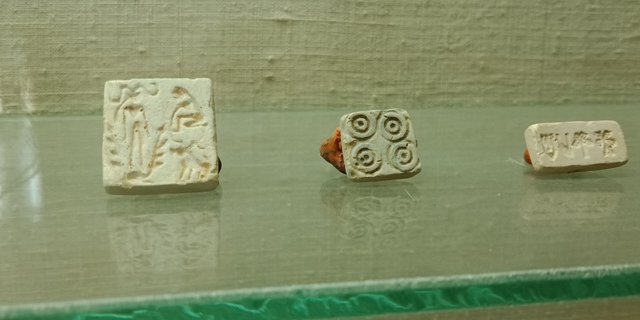
In the Rig Veda, there is a hymn by the name Purusa-Sukta, In this hymn, the authors postulate, that the gods created the world by dismembering the cosmic giant Purusha, the primordial male god who is the victim in the first Vedic sacrifice. The gods also divided humanity into four social classes, or ''varnas'', in which references are given in this hymn.
‘’When they divided the man, into how many parts did they apportion him? What do they call his mouth, his arms, thighs and two feet?
His mouth became the Brahmin; his arms were made into the warrior, his thighs the people, and from his feet the servants were born.’’
(See Rig Veda, Purusha Shukta)
Again, ifyou are trying to justify your position of power in society while not contributing anything tangible. This ambition needs to emanate everything you do and everything you write. We should keep that in mind while reading any attempt of explaining reality and in doing so ask the right questions. What does it mean politically, economically and philosophically? How does it affect me and my position in society?
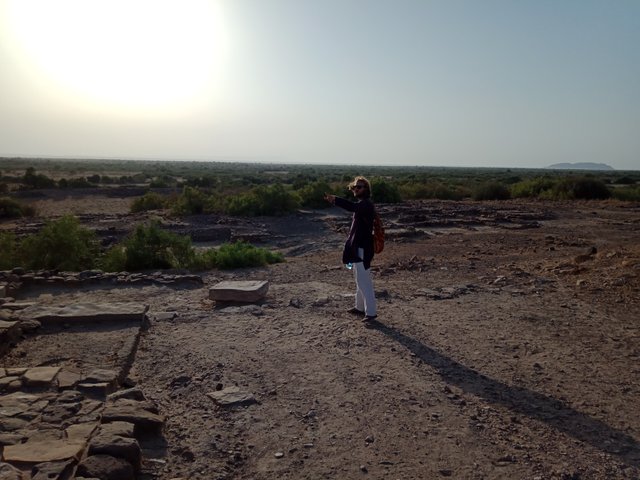
By basing their division of society and mirroring the Purusa Sukta, the priests divided society into classes ordained by the gods. They call every social class ''a caste'' which it derives it's English name from ''the cast system’' or the Varnas or the Jati system. Contemporary students of Hindu society recall an ancient fourfold arrangement of socioeconomic categories called the varnas, which is traced back to an oral tradition preserved in the Rigveda (dating perhaps from between 1500 and 1200 bce). The Sanskrit word varna has many connotations, including color, description, selection, and classification.
The first level was the Brahmins or the priests and the temple, in many ways was wealth and prestige not considered to be the power most sought after, but knowledge was. Below the priests were the kasyitras, they are the defenders of the priests and the temple making sure that the role of the priests was never profaned. The third caste vasisya who was the average people and they were laborers of the earth, the shopkeeper, the farmer, their purpose was to maintain the living standards of society. The fourth caste was the shudras considered to be the the slave and on the lowest level we have the Dalit who was the individual by nature a destitute, we know them as the untouchables today.
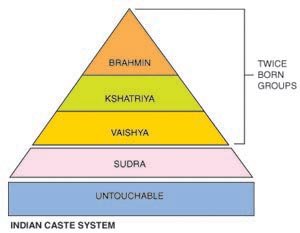
The Cast system perceives a given profession to be hereditary which means that if you were born into the warrior cast, this is where you will continue to live for the rest of your life.
Nobody was and still is allowed to marry or ascend into another higher or lower caste in India during their lifetime; this is referred to as endogamy. The lower casts in India have to wait for divine judgment and spiritual purification that will eventually endow them a position in a higher caste.
The Harappan religion was most probably built upon ritual purity, ritual purification is defined as, ‘’a feature of many religions. These rituals aim is to remove specifically defined uncleanliness prior to a particular type of activity, and especially prior to the worship of a deity. This ritual uncleanliness is not identical with ordinary physical impurity, such as dirt stains; nevertheless, body fluids are generally considered ritually unclean.’’
‘’Kenoyer (1989, 188) singles out a number of features relating to a hierarchy based on ritual purity that would be visible in the material record: segregation of living areas; private water sources, drainage, and waste disposal; and distinct types of vessels for preparing, cooking, and serving food. He points to the existence of separate sectors in the Harappan settlements, such as the walled citadel and the emphasis on privacy in the home, exemplified by the arrangement of the entrance to prevent the direct viewing of or access to the interior courtyard; to this one can add the restrictions on access within areas of the settlements and even within some structures.’’
(see The Ancient Indus Valley: A New Perspective, Dr Jane Mcintosh, page 269.)
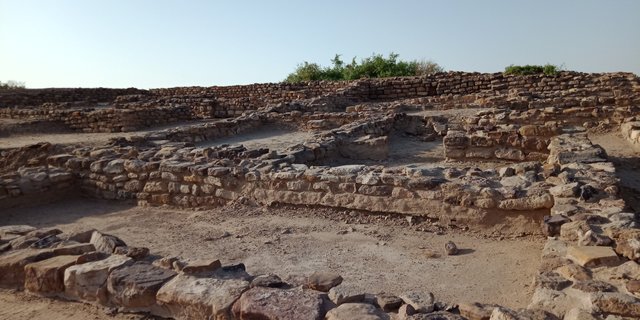
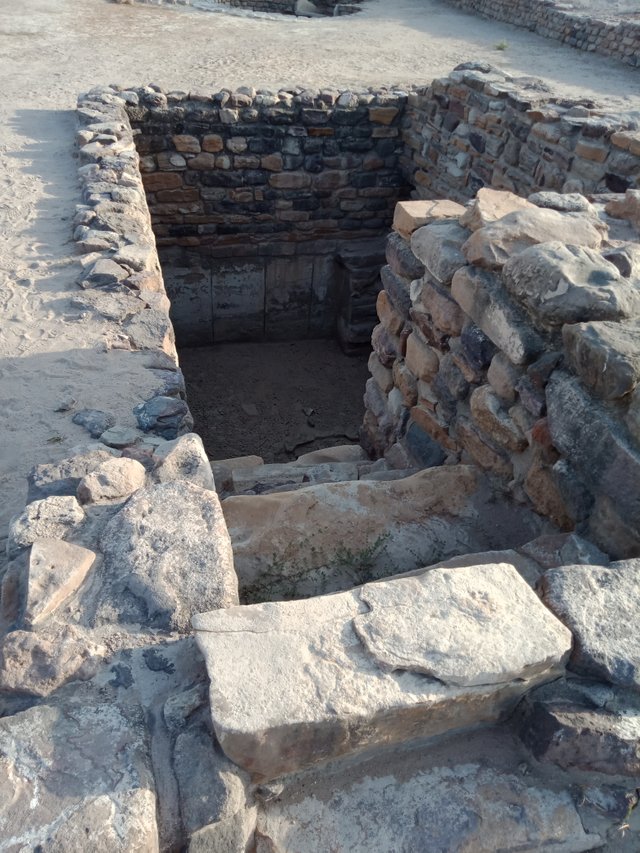
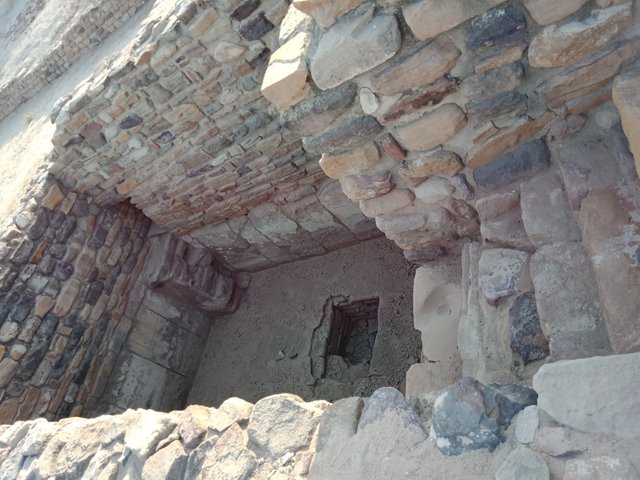
There were private wells and well-developed systems of drainage and waste disposal in many Harappan settlements. While in other societies, the quality and material of artifacts may provide an indication of the wealth of different groups and their ability to command access to restricted resources, it is possible that hierarchy among the Harappans may have been organized along different lines.
If ritual purity were the key factor in determining status, as it may well have been, those higher up the status scale would be identifiable by their possession of artifacts and materials. Thought to be more pure. In traditional South Asia, materials such as metal that can be purified after use are more pure than those that cannot, such as unglazed terra-cotta. Different styles of particular objects may also be associated with people in different ritual status groups, usable among themselves but liable to be polluted if used by individuals of lower ritual status: For example, at Mohenjo-daro Dales and Kenoyer (1986) identified five different varieties of cooking vessel that might have been used by different status groups.
(See The Ancient Indus: A New perspective, Dr Jane Mcintosh Page 269-270.)
One ethical concept unites the philosophies of the east, and that philosophical concept is karma. Karma is defined as ‘’an action, seen as bringing upon oneself inevitable results, good or bad, either in this life or in another reincarnation.’’ According to the philosophy set forth by the mystics of the east, cause and effect or karma, is one of the innate natural laws that the cosmos is built upon.
The cast system teaches that to come into contact with certain organic life could introduce more or less karmic pollution for the individual, to bathe inside the holy Ganges or Yamuna rivers can clear-away this pollution in many cases and so hierarchies are manifested through the way of life certain groups decide to live.
For example, to eat a strict vegetarian diet could carry less pollution than other foods like meat. For Hindus, it doesn't stop there, because different variations of the same food convey different degrees of pollution. Coming through fruition from a system of belief descending to us from the economic, political and religious backdrop in antiquity - its origins may well lie in the religious beliefs of the Harappans.
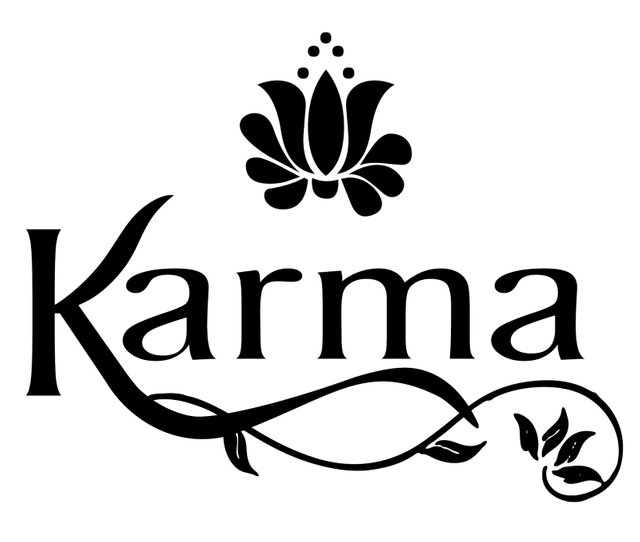
The eastern school of philosophy also holds reincarnation to be a fact of life, meaning that souls travel from body to body, or from one life form to another. Hinduism is based upon the idea that to release oneself from karma, and to eventually reach a higher state of existence in next life, the individual needs to go through perpetual sacrificial rituals to release oneself from contamination. Spiritual contamination that was a result of previous karmic actions, that eventually resulted in reaching a lower state of existence than this life. These sacrificial rituals were conducted by the priesthoods, promising their subject a release or Moksha from this world or samsara and into the next. The priest held a monopoly on most knowledge dealing with these sacred rites, which gave them the power to create a consensus reality and to demand taxes and tributes to the temple.
“In being born every being is born as debt owed to the gods, the saints, the Fathers and to men. If one makes a sacrifice, it is because of a debt owing to the gods from birth … If one recites a sacred text, it is because of a debt owing to the saints … If one wishes for offspring, it is because of a debt due to the fathers from birth … And if one gives hospitality, it is because it is a debt owing to men.”
(Rig Veda 8.47.17)
“Let us drive away the evil effects of bad dreams, just as we pay off debts.”
(“ Satapatha Brahmana 1.7.12, 1–6”)
There is an analogy from Egypt; the average person in Egypt would work his whole life and get very little in the end. The priesthood would draw up legal contracts, many of these documents have been found, in order to reach the Egyptian heaven which was the land of amenthet, the person had to go through different stages of purgatory which was copied later in Catholicism.
After you died, you still had to give pay the priesthood or give most of your estate to the ministry, which ended up with the clergy owning most of the land in ancient Egypt. What they would do in return was that they wrote down on a tablet of clay how many prayers they would do for you per day for your soul. So you made sure, that in the afterlife your soul would eventually go to the lands of the dead, but only through their intercession.
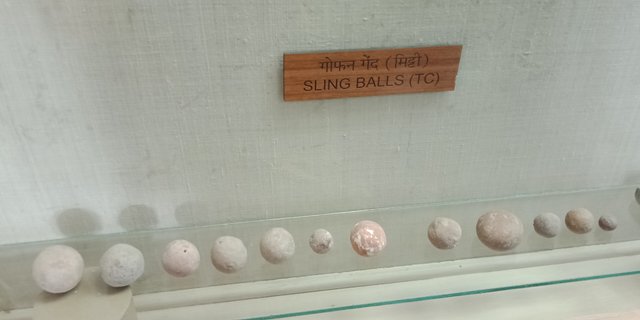
This was a way to broaden the notion of debt and causing this to be the origins of the debt system we come to know today.
The word debt derives from, c. 1300, dette, "anything owend or due from one person to another, a liability or obligation to pay or render something to another,"
(Etymology online: On Debt)
‘’In the Rig Veda, it is postulated that to be in debt was to have a weight placed on you by the god of death Yama. To be under any sort of unfulfilled obligation, any unkept promise, to gods or to men, was to live in the shadow of Death. Often, even in the very early texts, debt seems to stand “in for a broader sense of inner suffering, from which one begs the gods—particularly Agni, who represents the sacrificial fire—for release. It was only with the Brahmanas that commentators started trying to weave all this together into a more comprehensive philosophy. ‘’
(Debt The First 5000 Years, David Graeber, Page 202)
As a seemingly living element, which consumes, warms and shines, which can cause pain and cause death, the fire is symbolically ambiguous. In India and in many other ancient cultures, the fire has been a sacred symbol of the home. During the Vedic age, Agni was the god of fire and is regarded as one of the oldest gods in the Hindu Pantheon.
We should remember that what began in the beginning of humanity for millions of years ago marked the dawn of culture was "the taming" of the fire. The fire is the only of all elements that man can accomplish; therefore, the fire has been a sign for the godly man. According to many myths, the fire from the beginning belonged to the gods and first came into the possession of humanity through a robbery.
One major ritualistic practice that characterises Indian religion is the fire altar and interestingly enough fire altars have been found in excavation sites throughout the Indus/Sarasvati culture.
These fire altars are nearly identical to those in use today, which strongly indicates of a cultural continuation from the Indus/Sarasvati culture through to the Vedic and all the way until today in modern India.
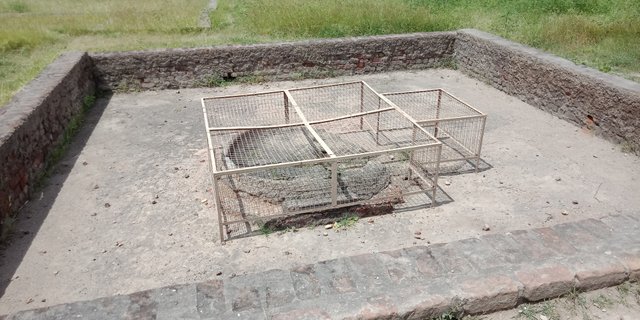
Fire altar in Lothal
Psychologically this puts mankind into a perpetual state of indebtedness to the gods and in fear of making the Gods angry and or that their soul would have to go through purgatory, and or the God of death, they had to pay back with gruesome sacrifice, tributes or taxes.
Much later and contrary to this, Buddhism arose as a reaction to the corrupt social hierarchy existing in ancient India at this time, Buddha states conclusively, that these rituals are entirely arbitrary and unnecessary because according to Buddha the only one that can save us from our karma is ourselves, through right feelings, right thoughts and right action. Buddha said along similar lines, ''If your god does not prevent evil, then your god is not good, if your god can not prevent evil, then your god is not god.''
According to the early school of Buddhism, rituals as such was not necessary for the development of the individual and his release from suffering. These rituals were held because of the impending balance of power that was held by the priest class. In this regard, Buddhism should be considered to be an ethical reformation of Hinduism as much as a political movement. Buddhism tried to free people through the act of not complying to the created consensus reality the Brahmins maintained, in other words falling for superstition, that eventually fueled the control mechanism held by religion at this time.
In similar lines, Buddha also stated that ''it was not the gods that created men, it was men who created the deities.''
Buddha tried to show a straightforward path to life, namely when we begin to take responsibility for our own actions and stop giving our power back to the gods. A pantheon we can not see or have direct contact with, we are losing focus on that which we can control, and that is our own moral life, the destruction of which, is the ongoing cause to our suffering.
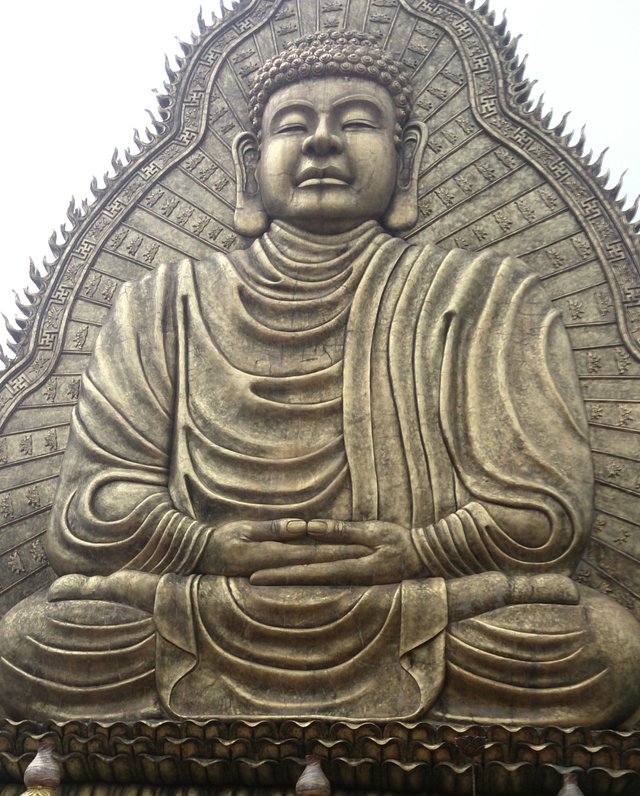
Epistemological Warfare
As I mentioned before, the highest caste of the Vedic age in ancient India were the Brahmins, and most probably the governing power of the Indus civilization was a theocracy or the rule of religion. Even though it is true that priests and the warrior class, not engaged in economically productive activities, and in that sense, exploiting the peasants and workers. Held society together in a hierarchical system based on ritual practices. The highest power in this regard was not money, arrows, spears or gold but was considered to be, knowledge, specifically traditional knowledge about the ritual practices being executed by the priests.
The adage, knowledge is power comes to use here, for thousands of years the ancient priesthoods all over the world understood that to perpetuate theocracy in general, they had to play on peoples superstition. To be successful, they needed to suppress knowledge from the general masses, the knowledge they had learned from thousands of years of studying nature and society around them.
Because knowledge became correlated with status, two kinds of knowledge began to develop in the world, esoteric ‘’meaning the kind knowledge for the priests’’ and exoteric ‘’knowledge for the masses’’.
As an example, the sacred mantras was expressed through Sanskrit, the language of the priests; this knowledge being restricted to the lower castes compartmentalized society caused a world divided by those that did not know and those who did know.
We can call this epistemological warfare, epistemology means ''the study or theory of the nature, sources, and limits of knowledge'', in other words, knowledge, is a double-edged sword because it can lead you into the light of wisdom, but distorted expertise can and will guide you into superstition and denial.
In other words, it is impossible to rule a society based purely on ritual purity, without controlling the way people perceive themselves and the community around them. By controlling the narrative, it is easy to convince a subject population to base their decisions on axiomatic ideas that one thing is purer than another, this conceptual narrative exists solely in the mind of the individual that passes judgment. Ideas fuel every system of belief in our world, when we change our ways and our ideas about something our actions change too. Since the dawn of time religion has been so reversely negative concerning, philosophy and science because there lays the power of hypothesis and the discovering of universal principles and the estimation values. It is by the correct usage of which we ascend beyond the level of myth into the level of understanding.

Commerce Of The Ancients
Humanity was social before it became individualistic and trade shows us this clearly, in other words, commerce is as old as civilization itself and as long as we have had humans traveling on the land of the earth trade has always been the main activity that connects people from one place to another. The reason being that there is an innate drive within the human being to explore his world and to strive to reach beyond the boundaries of his perceptions.
We have no idea of how old organized commerce is, the trade routes from Sumer to China and the Indus Valley existed a very long time ago. When uncovering the newly found archeological sites in Rakhigari, it shows that even 10000 years back people performed organized commerce.
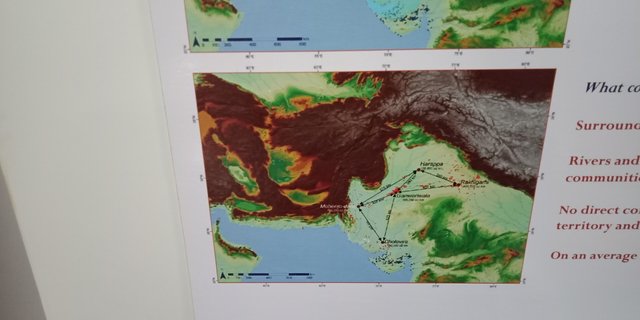
The earliest form of trade was pragmatic in nature, based on commodities such as stone tools or metals such as obsidian that held long-lasting properties suitable for the life of the early civilized world. The Harappans did most of their trade inland, using wheeled carts, camels and small riverboats to move their goods from one place to another.
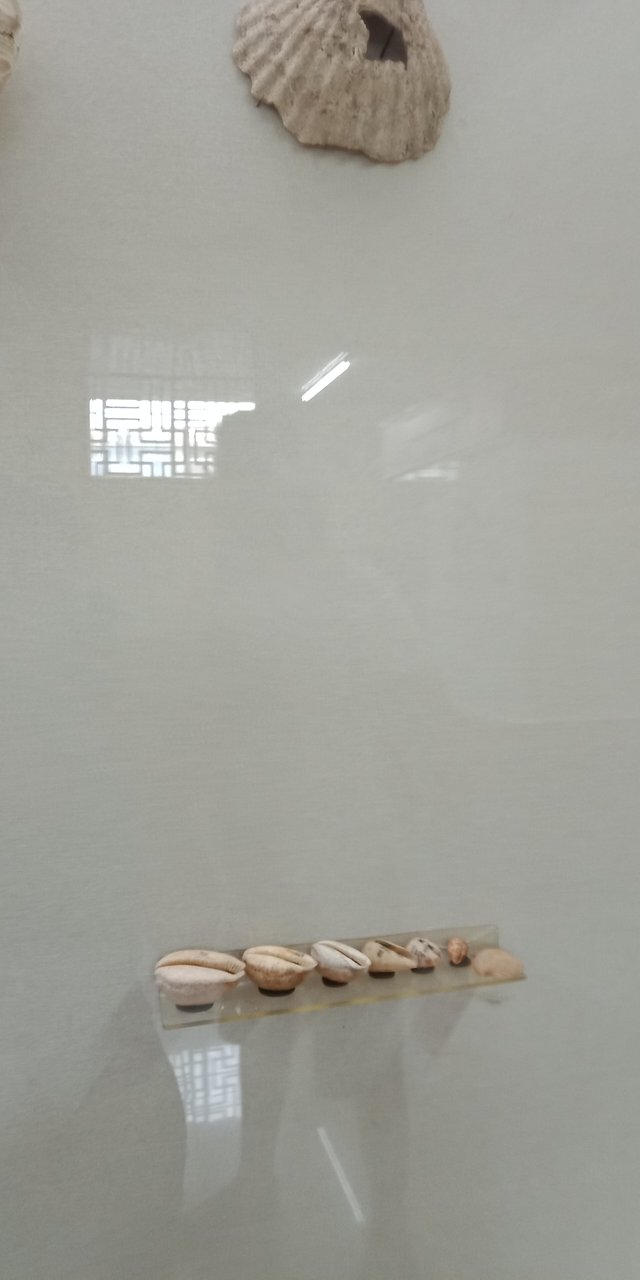
Even as far back as the 7th millennium BC, the Indus Valley culture was mining for Lapiz Lazuli in the Sari Sang mines located in northeastern part of Afghanistan. Becoming characteristic for the Indus Valley civilization Lapiz Lazuli held a specific significance to the Harappans. Therefore, archeologists have found traces of Lapiz Lazuli inside Neolithic burials in some of the earliest sites dug up throughout the Indus Valley civilization.
Being a costly endeavor, land transport, was for the most part executed by animals and humans who used freight cargos as a means to transport high-value goods concerning volume, such as gold, silver and precious stones, precious fabrics, spices, and perfumes, as well as artistic and religious items. Moreover, it also seems as thou, that the Harappan culture was one of the first to us wheel carts and oxcarts to move their goods from one place to another, the same types of vehicles that are in usage even today throughout South Asia.
Barter
Leaders of neighboring areas and the early city-states of the Pre Harappan world engaged in a ritualistic exchange of gifts, a kind of a hidden form of barter.
Barter was the means of exchange and trade in the very early days, so barter became the basis of the monetary system. The definition of barter is ''to trade by exchange of commodities rather than by the use of money''.
If a man had a flock of sheep and wanted to trade his sheep for something he wanted, the sheep farmer would drive his sheep into the town square and exchange a couple of his sheep for something he needed. In the barter system, the responsibility lays within the owner to protect the value of that he wished to exchange. For example, if the sheep farmer did not take good care of his sheep, people would recognize this fault, and he would go out of business quickly.
In other words, if the shepherd pursued legitimate commerce, his reputation would eventually rise in the sight of other people, and this eventually served his purposes.
With barter, you can come to a common understanding with the other person how much a sack of potatoes costs contra a bag of oatmeal. You could swap what you had for what you wanted.
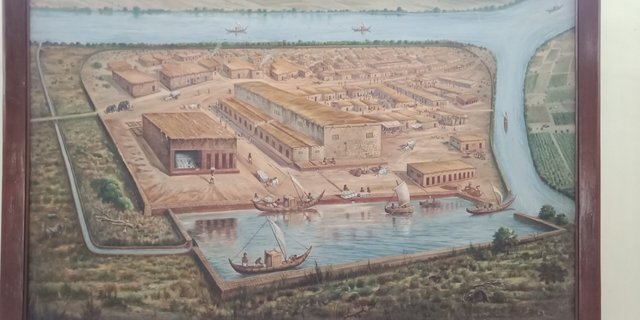
Maritime Trade
Concerning this, one tantalizing discovery they have made in the search for further revelations about the Indus-Sarasvati Culture is the remains of a cuneiform tablet dating back 5000 years, inscribed into this tablet are icons picturing sailing boats. Considered to be the oldest of its kind, could this indicate that the Indus Valley civilization was one of the first to explore the possibility of maritime trade overseas.
The maritime trade amongst the Indus-Sarasvati river settlements was mostly due to small boats made out of reed. Since most transportation of goods was carried through the ancient land routes on foot, the time efficiency of the sailboat became a symbol of a new form of trade. Instead of transporting goods by land routes that could take months and maybe even years the sailboat modernized trade and commerce. Boats were considered to be a vehicle that was able to travel the same distance in a much shorter period.
In the ancient ruins of Lothal, there is ample evidence that shows a docking facility. This archeological find revealed to the archeologists that before the water receded into the Indian Ocean, the Indus-Sarasvati culture did travel by boat and it seems like Lothal was one of the most important trading ports to the Indus culture.
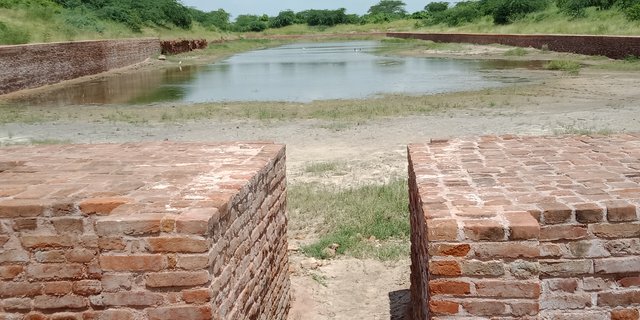
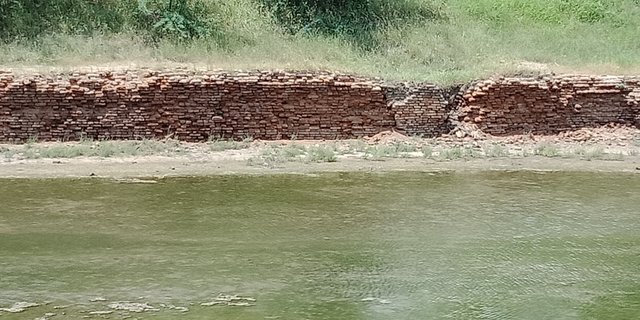
Evidence has now revealed to us that long before anyone would assume that a maritime sea trade network even could exist, the Indus people were the masters of the sea. Excavations have revealed that seashells that originate in Bahrain in today's Oman are to be found all over the Indus-Sarasvati Valley.
In the shipwreck of Uluburun outside the coast of Turkey, dated to around 1400 BC, archeologists found a fantastic discovery. Artifacts were discovered from seven different cultures. The conclusion is now drawn from historians and alike that global commerce is not anything new, but we are only accustomed to the idea in the modern world but something that can be traced back into remote antiquity.
At some point, in history, a maritime route to Mesopotamia was discovered by the Indus people. Moreover, a continuing trade connection by sea was established between these two empires.
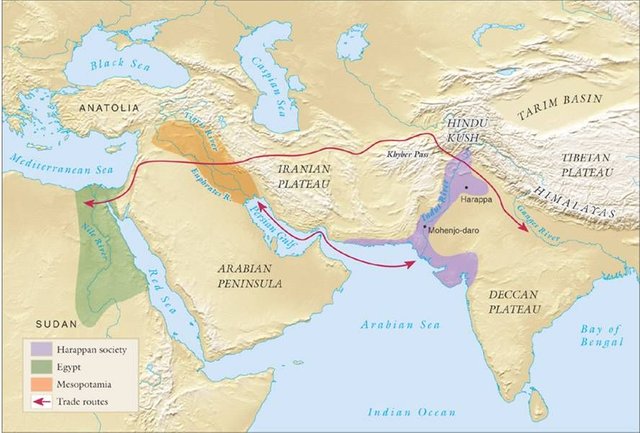
One can only speculate about what the main factor could be that drove these merchants to search for new lands. Most probably it had to do with survival - to live and develop you need to progress, and to progress, you need resources and necessities of life. The deficiency of specific products was that in which ancient man sought after.
At some remote time, the merchants of the Indus Valley seemed to pass the sea of Oman, it being a dangerous journey; indeed, it soon proved its worth. For some mysterious reason these Indus traders settled down on the outskirts of the Mesopotamian empire, they soon found an ideal place on the peninsula of Oman to perform the trade. On the coast of what we refer today as Bahrain, lying buried beneath rock and sand, Indus seals and insignia have been found inside burial that is considered to be the remnants of an old civilization referred to as Dilmun
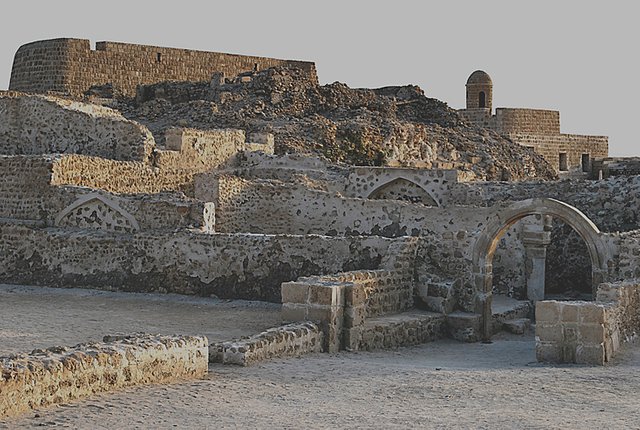
Texts are dating back to the Akkadian king Sargon who mentions merchant ships that traded in his harbor - and they were supposed to have originated from a place called Dilmun. It is also interesting to note that the Dilmun civilization played an essential role in the story of the creation myth of the Sumerians.
There is much to indicate that Dilmun was a form of port or dock where trade between the Indus empire and The Mesopotamians could be facilitated easier. Much later in history, during the Vedic age of India, a similar trade port was set up in the Egyptian city of Memphis. This trading port would after some time grow into becoming a flourishing Indian colony.
Industrial Economy Of The Indus
The Indus Valley produced commodities on an industrial scale. Products and goods they traded and sold with other civilizations. To list some of the items that they provided. They are the following:
Cornelian beads
Terracotta pots
Cotton and foremost woven cotton goods.
Gold and silver,
Colored gem stones such as turquoise and lapis lazuli,
Metals, flints (for making stone tools)
Seashells and pearls
- Fine pottery wares,
- Jewelry,
- Copper and bronze vessels

The Trade-In Tin
Being a Bronze Age society; inhabitants of the ancient Indus River valley developed new techniques in metallurgy—the science of working with copper, bronze, lead, and tin. Harappans also performed intricate handicraft using products made of the semi-precious gemstone Carnelian.
For an ancient civilization to be classified as Bronze Age (circa 3300 to 1200 BC) it had to be smelting its copper and alloying with tin or other metals to produce bronze, or it was involved in trading for or with bronze.
To make bronze one had to have tin, so during the Bronze Age Tin held an equal place concerning resource necessity as petrol does for us today. The one that had control over the trade in Tin would have lots of power over other nations. We know that the area Badakhshan in today's' Afghanistan was affluent of tin, being located inside Indus territory, this fact and resource became an enormously important place for the Indus Valley civilization. Merchants would mine tin and ship it to Mesopotamia, North Syria, and the Aegean.
“The availability of enough tin to produce … weapons-grade bronze must have exercised the minds of the Great King in Hattusa and the Pharaoh in Thebes in the same way that supplying gasoline to the American SUV driver at reasonable cost preoccupies an American President today!”
(See Professor Carroll Bell)
‘’The developments in metallurgy and bronze technology spread from the Indus-Sarasvati culture across Central Asia by way of the Eurasian Steppes, and with it came the knowledge and technology for tin prospection and extraction. By 2000 to 1500 BC Uzbekistan, Afghanistan, and Tajikistan appear to have exploited their sources of tin, carrying the resources east and west along the Silk Road crossing Central Asia. This trade link likely followed an existing trade route of lapis lazuli, a highly prized semi-precious blue gemstone, and chlorite vessels decorated with turquoise from Central Asia that has been found as far west as Egypt and that date to the same period.’’
(See https://en.wikipedia.org/wiki/Tin_sources_and_trade_in_ancient_times)
Another proof concerning that a precursor to the silk route was in place many thousands of years before the Han dynasty in China. Was that the Pharaohs in Egypt possessed Chinese silk around 1100 BCE. Interestingly enough, the silk route that took merchants from China to Europe some time ago was located very close to the Badakhshan mines in Afghanistan, the same mines where the Indus people once mined Tin.
Money
As sea trade was becoming the most efficient way of moving goods from one place to another, which meant that the older form of ‘’barter’’ became outdated in many areas, sea trade demanded something new, and no developments come without complexity and pain, boats caused a spatial problem. In other words, having a limited amount of space to carry bulky goods, a large cargo became no longer an option, and instead of being providers of necessities, traders would bring the things that were highly valued such precious metals, these products would become status symbols for kings and queens of the ancient world.
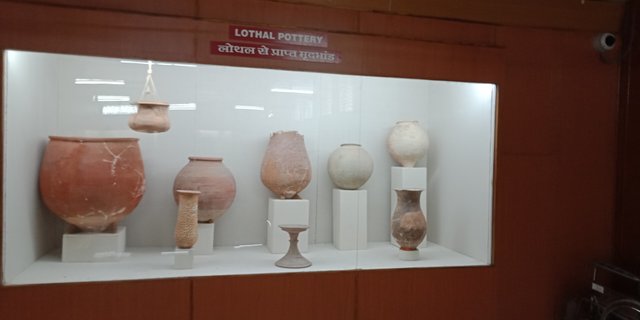
So the trade on the seas facilitated primarily trade with luxury goods and as this became a new and enormously profitable form of trade amongst the Indus and the Mesopotamians. As barter became a thing of the past, arguing over the value of luxury items also became outdated, so to facilitate this kind of trade ancient people created a symbolic expression of value, that would be of use when a transaction was to be done. This is what we come to understand today as money.
Instead of commodities being exchanged on the spot, tokens were used to facilitate transactions. These tokens only stood for one thing, it held for value; it represented a monetary, financial or commercial value, it was a symbol of an object that symbolized the commodity patterns of the time.
Ancient man was all in agreement that the token itself did not possess any value. In other words, as long as money remains a symbol of value, it can stay a vital form of exchange. However, throughout ancient history, one can observe that a gradual change took place, tokens were starting to be regarded as the value itself, and eventually, the theory of accumulation took over.
The earliest forms of mediums of exchange that we know of are cowrie shells, specific gem stone beads, certain precious metals; also barley and other valuable goods were all used as an early form of medium of exchange. However, a truism was right then, and it is true today, that is, once you get beyond barter system all money is fiat, the definition of which is this ‘’money (such as paper currency) not convertible into coin or specie of equivalent value’'
So there is no such thing as natural money, gold, silver, diamonds, cows, wampon, are all different approaches of what a medium of exchange is.
‘’In other words, there is a false belief there is an intrinsic value expressed by money, but the value expressed is not as quantity per se. It is only the relative increase or decrease of its physical potential relative to the population density of a society. The value of money lays not in its individual exchange, but in it’s function as a unifying dynamic of social processes of a nation.’
(Dr Daniel Estulin, Transevolution, page 22.)

Concerning this, there is a story of the ancient Lydian king Croesus who was considered to be one of the wealthiest people in the world. One day he brought Solon the great poet and lawmaker of Athens to his palace and revealed to him his treasure. When the philosopher went into the room filled with gold he said ‘’ Croesus all your gold will one day disappear into the hands of somebody with better bronze’’.
What Solon tried to portray was that it is not money in itself that affects the planet, but the human mind, and its innate creative faculty of progress, development, and production of physical goods. In other words, you can have all the money in the world, but money is fiat, it is not worth anything, and you can not eat it. To empower money, it only depends on what you use the money for. Moreover, action depends on perception and perception depends on the human mind; the only faculty that inevitably affects the planet.
It is indeed an interesting fact that the first coin ever minted is to be found in India which would mean that India did play a role in inventing the first forms of mediums of exchange that we come to know today.
Decimal Numbers And Weights
With extensive trade and commerce comes credit keeping, this was supposed to be of great interest to the Indus Valley civilization. Moreover, so, weights and measure rods have been found at Mohenjo Daro and Harappa and other sites that have revealed remarkable accuracy. An early practice of what we would refer today as ''money changing'', can be uncovered here, the definition of which is ''one whose business is the exchanging of kinds or denominations of currency''.
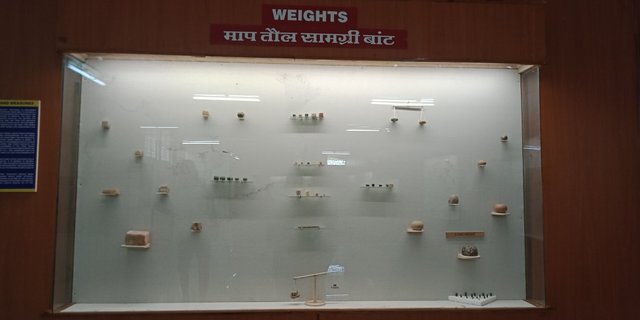
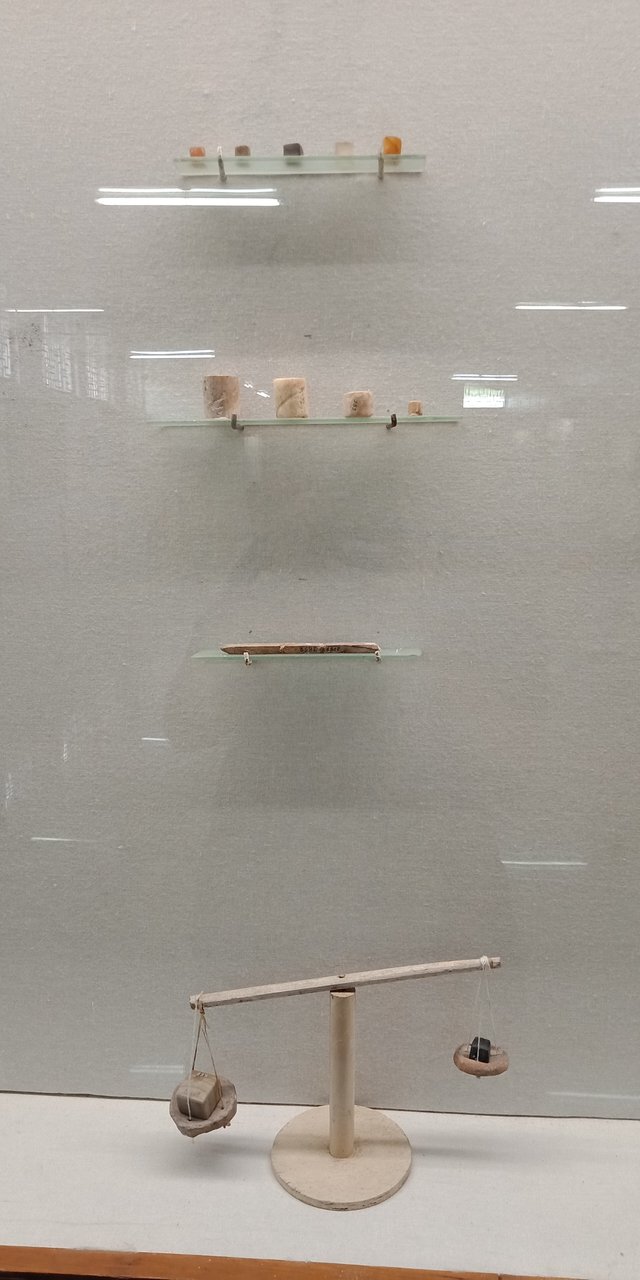
All of this reveals to us the origins of a particular scientific knowledge, interestingly enough the etymological root word of a bank in Latin is a bench. The reason is simple, and that was because these money changers with their measurements and their credit keeping most probably executed their business on a bench.
‘’Remarkably accurate weights and measuring rules give some insight into the Harappans’ numerical system. Four examples of graduated rules have been found: made of terra-cotta, ivory, copper, and shell, they came respectively from Kalibangan, Lothal, Harappa, and Mohenjo-daro. These were marked into divisions of about 1.7 millimeters, the largest unit marked on the Mohenjo-daro rule being 67.056 millimeters and others on the Lothal scale including 33.46 and 17 millimeters. The latter closely approximates the traditional unit of 17.7 millimeters known from the fourth-century BCE text Arthashastra.
The weights, which are uninscribed, follow a binary-decimal system: 1, 2, 4, 8, 16, 32, up to 12,800 units, one unit weighing approximately 0.85 grams. Thus some of the weights are so tiny that they could have been used by jewelers to measure gold; others are so enormous that they must have been hoisted by ropes.
From Harappa a measuring rod is known that shows units of 0.367 inches, which suggests that the early Indic peoples knew more than one system of measurement. The second system was apparently that of the “cubit” (of 20.7 inches) found also in Egypt, Babylonia, and elsewhere. The buildings of Harappa and Mohenjo-Daro were all laid out in cubits.
Measurements were principally based on a decimal system, reminding one of the fact that the decimal numerals we use today came from India. In Mohenjo-Daro a scale was found that is divided into precise units of 0.264 inches. The “foot” measured 13.2 inches (equalling 50 x 0.264).
The weight and linear measurement systems and the probable numerals in the Harappan script seem to suggest that the Harappans used both a base-8 (octonary) and a base-10 (decimal) system in counting. Aspects of both have survived in later Indian mathematics and general use. For example, in the predecimal Indian coinage, the rupee was 64 paise or 16 annas, each divided into 4 paise; and the whole system of Arabic numerals, base-10 positional notation, and the use of zero derives ultimately from India.’’
(See David Frawley, Georg Feuerstein, Subhash Kak, In The Search Of Civilisation, Page 73.)
This might suggest to us that the Indus-Sarasvati Valley civilization was very skilled in both arithmetic and geometry. This can also be a proof of the long-standing mathematical tradition of Indian thinkers. Moreover, it might be, that the mystery of mathematics and the true origins lays within the early Indian people. Being used primarily in religious context astronomy and mathematics also share another correlation with Hinduism and the Vedic age.
References:
Georg Feuerstein, Subhash Kak, and David Frawley, The Search For The Cradle Of Civilisation.
History Of World Societies.
Herman Kulke, Dietmar Rothermund, A History Of India.
Professor Lary Neal and Professor Rondo Cameron, History Of World Economy.
Burjor Avari, India: The Ancient Past.
Irfan Habib, Indus Civilization.
Ernest Busenbark, Sex symbols and the Stars.
Dr Jane Mcintosh, Ancient Indus Valley: New Perspectives.
Professor David Graeber, Debt The First 5000 Years.
Manly P Hall, Lectures On Buddhism.
Dr Daniel Estulin, Transevolution.
Congratulations @metasophical! You received a personal award!
You can view your badges on your Steem Board and compare to others on the Steem Ranking
Vote for @Steemitboard as a witness to get one more award and increased upvotes!
Downvoting a post can decrease pending rewards and make it less visible. Common reasons:
Submit